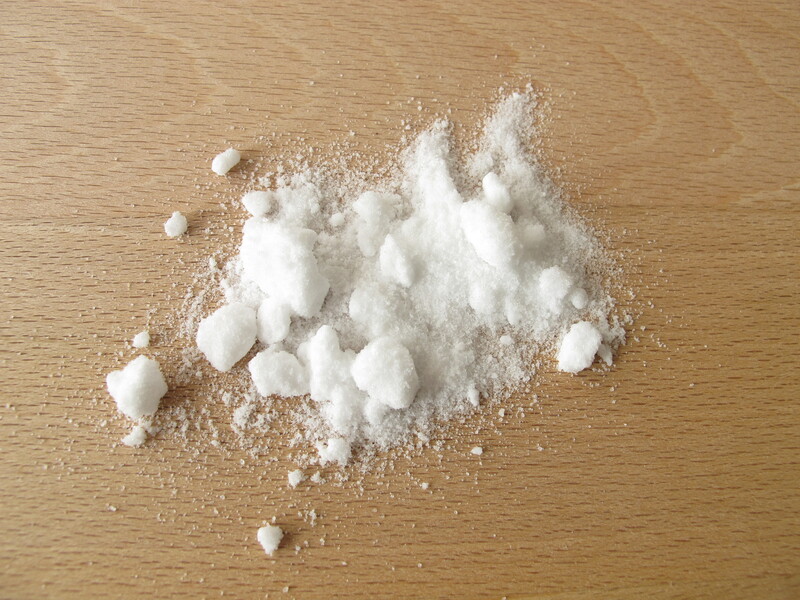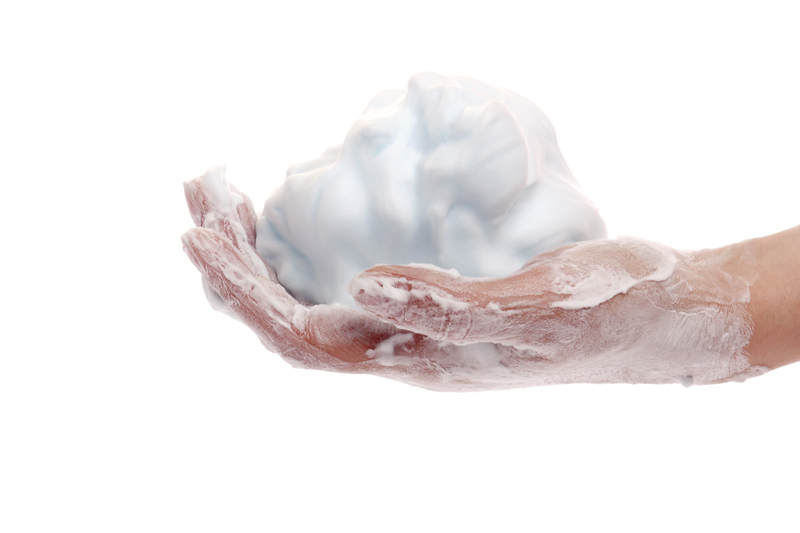Unlock the Secret to Effortless Burnt-on Residue Removal
Posted on 30/05/2025
Unlock the Secret to Effortless Burnt-on Residue Removal
Stubborn burnt-on stains and residues can turn your favorite pots, pans, and oven trays into a nightmare. However, removing burnt-on residue doesn't need to be a lengthy, exhausting, or frustrating process. In this comprehensive guide, discover smart techniques, natural remedies, and expert tips to unlock the secret to effortless burnt-on residue removal.
Understanding Burnt-on Residue: Why Is It So Hard to Remove?
Before diving into solutions for burnt-on residue removal, let's explore why these stubborn stains cling so tenaciously. Burnt-on residue forms when food, oils, or sugars overheat and chemically bond with metal or glass surfaces. Over time, this creates a hardened, blackened crust that ordinary cleaning just can't tackle. Understanding the science helps us approach removal smarter and more efficiently.
The Science of Burnt-on Residue
- Caramelization and Carbonization: High heat causes sugars and starches to caramelize, then carbonize into tough, burnt residues.
- Oil Polymerization: Cooking oils oxidize and harden, becoming nearly impervious to water and soap.
- Protein Cross-Linking: Eggs, meats, and cheese leave protein films that intertwine and adhere stubbornly to cookware and appliance surfaces.

Why You Need Specialized Burnt-on Residue Removal Techniques
Regular dish soap and scrubbing simply aren't enough for truly burnt-on stains. In many cases, using improper methods can scratch or damage expensive cookware. Instead, using the right blend of natural cleaning agents, patience, and targeted techniques can unlock the secret to removing burnt-on residue effortlessly.
The Benefits of Effective Burnt-on Residue Removal
- Prolongs the life of your cookware
- Restores surfaces to their original shine
- Prevents unwanted flavors in future meals
- Reduces the risk of bacterial build-up
Preparation: What You'll Need for Easy Burnt-on Residue Removal
Gather these household items--most are likely already in your kitchen or pantry:
- Baking soda
- White vinegar
- Lemon juice
- Cream of tartar
- Dish soap
- Non-abrasive sponge or soft-bristled brush
- Plastic scraper or spatula
- Hot water
- Aluminum foil (optional)
- Rubber gloves (for protection)
With these simple ingredients, you're equipped to tackle even the toughest burnt food and stains on pots, pans, baking sheets, and more.
Step-By-Step Guide: How to Remove Burnt-on Residue Effortlessly
1. Start with Soaking
Hot water is your best friend. Fill the affected cookware with hot water and add a generous squirt of dish soap. For even more power, sprinkle in a tablespoon of baking soda. Let the pan soak for at least 30 minutes--or overnight for really stubborn residues. This softens the burnt crust and makes scrubbing significantly easier.
2. Use a Baking Soda Paste
- Mix equal parts baking soda and water into a thick paste.
- Spread the paste over the burnt residue and let sit for 15-30 minutes.
- Gently scrub with a non-abrasive sponge or soft brush.
The gentle abrasiveness of baking soda helps dissolve and lift burnt-on stains without scratching surfaces. For glass or stainless steel, baking soda is both powerful and safe.
3. Harness the Power of Vinegar
Vinegar's acidity dissolves mineral deposits and burnt food residue.
- Add equal parts water and white vinegar to the pan.
- Bring to a simmer on the stove for 5-10 minutes.
- Turn off the heat and let cool slightly, then scrub away softened burnt areas with a sponge.
Vinegar also works wonders in ovens--simply spray diluted vinegar onto stubborn stains and let sit before wiping clean.
4. Try Cream of Tartar for Shiny Results
Cream of tartar contains mild acids that react with burnt residues.
Sprinkle a layer onto the affected surface, add a little water to make a paste, and rub gently. Rinse for brilliantly clean cookware--especially effective on aluminum and stainless steel.
5. Lemon Juice: Nature's Degreaser
Lemon's natural acidity and degreasing power help loosen even the toughest residue. Cut a lemon in half, dip the cut side in salt, and scrub directly onto burnt spots. The citric acid and salt act as a dual-action cleaner and gentle abrasive--plus, it leaves cookware smelling fresh!
6. Use a Plastic Scraper or Spatula
If burnt-on residue remains, carefully use a plastic scraper to lift away stubborn bits. Avoid metal utensils, which can damage non-stick or delicate surfaces. With the above soaking and natural cleaner treatments, most residue will loosen enough for easy scraping.
Specialized Techniques for Different Surfaces
Stainless Steel Cookware
- Baking soda and vinegar combination works best.
- For extreme cases, use stainless steel cleaner or repeat the process.
- Never use steel wool or highly abrasive pads.
Non-Stick Cookware
- Only use soft sponges and gentle agents like baking soda.
- Avoid harsh abrasives that can ruin the non-stick coating.
- Rinse thoroughly to remove residue.
Cast Iron Pans
- Use coarse kosher salt and a small amount of water to scrub away residue.
- Rinse, dry, and re-season the pan as needed.
- Avoid soap and soaking for long periods.
Glass Bakeware
- Baking soda paste or vinegar soak is highly effective.
- For stuck-on caramelized sugar, pour boiling water directly onto the burnt spots before scrubbing.
- Avoid sudden temperature changes to prevent cracking.
Advanced Tricks: Professional Secrets to Effortless Burnt-on Residue Removal
Baking Soda & Hydrogen Peroxide Paste
- Mix baking soda and hydrogen peroxide into a paste.
- Spread over burnt areas and let sit for one to two hours.
- Scrape and rinse away for dramatically improved results.
Aluminum Foil Ball Scrub
- Form a small ball of aluminum foil.
- Use it to gently scrub glass baking dishes or stainless steel (never non-stick or coated pans).
- Combined with baking soda and a dash of dish soap, this method works on even heavy-duty burnt residue.
Commercial Burnt-on Residue Removers
For extremely stubborn burnt-on food stains or if you're short on time, dedicated burnt residue removers are available in stores and online. Always choose one suited for your cookware type and follow manufacturer instructions for safe, effective use.
Prevention: Keep Residue From Sticking in the First Place
Unlocking the secret to effortless burnt-on residue removal is often about prevention as much as cure. Incorporate these habits to keep cookware spotless and cleaning effortless:
- Always use enough oil or cooking spray to minimize direct contact.
- Monitor heat carefully--avoid prolonged high temperatures which lead to burning.
- Soak pans immediately after cooking to prevent residue from hardening.
- Use silicone, wooden, or plastic utensils to avoid scratching and damaging pan surfaces.
- Regularly clean and maintain cookware to easily remove minor stains before they get worse.
Frequently Asked Questions: Burnt-on Residue Removal
Is it safe to use oven cleaner on cookware?
Oven cleaner is not recommended for most cookware--its harsh chemicals can corrode metal and damage non-stick coatings. Stick with natural cleaning methods or dedicated cookware cleaners for safety and longevity.
Can burnt-on residue be removed without scrubbing?
With the right soaking solution and patience, many burnt-on residues will lift with minimal scrubbing. The key is using hot water, baking soda, vinegar, or lemon to loosen and dissolve stubborn stains before gently wiping away.
Does the type of cookware affect which method is best?
Yes! Stainless steel, glass, non-stick, and cast iron each require slightly different approaches. Always use non-abrasive tools on delicate surfaces, and check cookware care instructions before applying harsh chemicals or abrasives.
How can I remove burnt-on residue from an oven or stovetop?
For ovens, spread a paste of baking soda and water on burnt spots and let sit overnight; in the morning, gently scrub and wipe clean. For stovetops, use diluted vinegar or lemon juice, then wipe with a damp, soft cloth. Avoid scraping that can scratch enamel or glass surfaces.
Will burnt-on residue removal methods affect flavor?
Naturally-based cleaners (baking soda, lemon, vinegar) will not adversely affect the flavor of food as long as you rinse cookware thoroughly after cleaning.

Unlock Your Cleanest Kitchen: The Art of Burnt-on Residue Removal
Burnt-on residue doesn't have to spell the end for your favorite kitchenware. By understanding why these stains form, choosing safe and effective cleaning agents, and applying the right techniques for your specific cookware, you can unlock the secret to effortless burnt-on residue removal every time.
From simple baking soda solutions to advanced tricks like hydrogen peroxide pastes, these natural methods are tough on stains yet gentle on your pots, pans, and bakeware. Say goodbye to marathon scrubbing sessions and hello to a gleaming, healthy kitchen!
Summary: Your Burnt-on Residue Removal Toolkit
- Baking soda--is your daily go-to for gentle abrasion and stain removal.
- Vinegar and lemon juice--break down residue with natural acids.
- Plastic tools--scrape without scratching.
- Specialized methods--for different materials (cast iron, glass, non-stick, stainless steel).
- Patience and prevention--are key for long-term results.
Ready to restore your cookware to like-new condition? These expert tips and home remedies will help you achieve sparkling results with minimal effort, ensuring your time in the kitchen is always a joy--not a chore.
Now you know the secret--effortless burnt-on residue removal is just a soak, a sprinkle, and a gentle scrub away!



